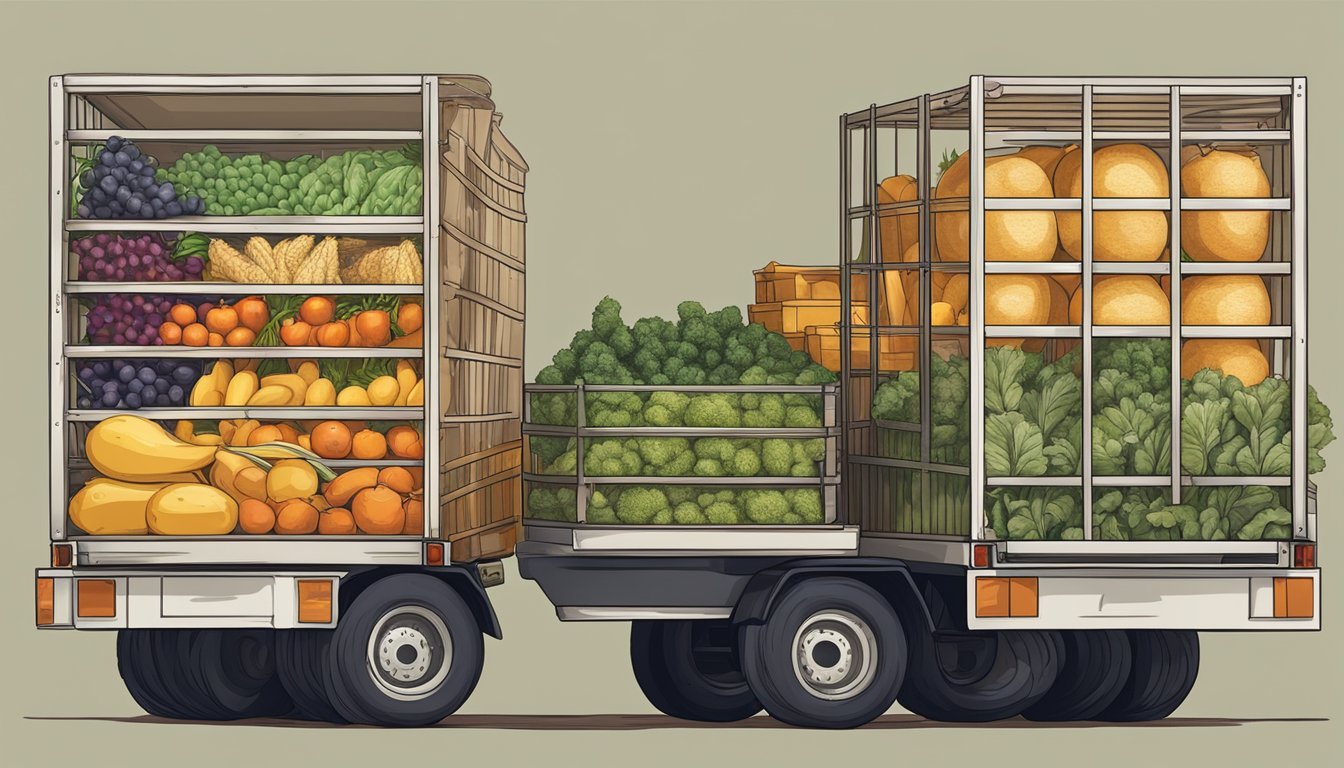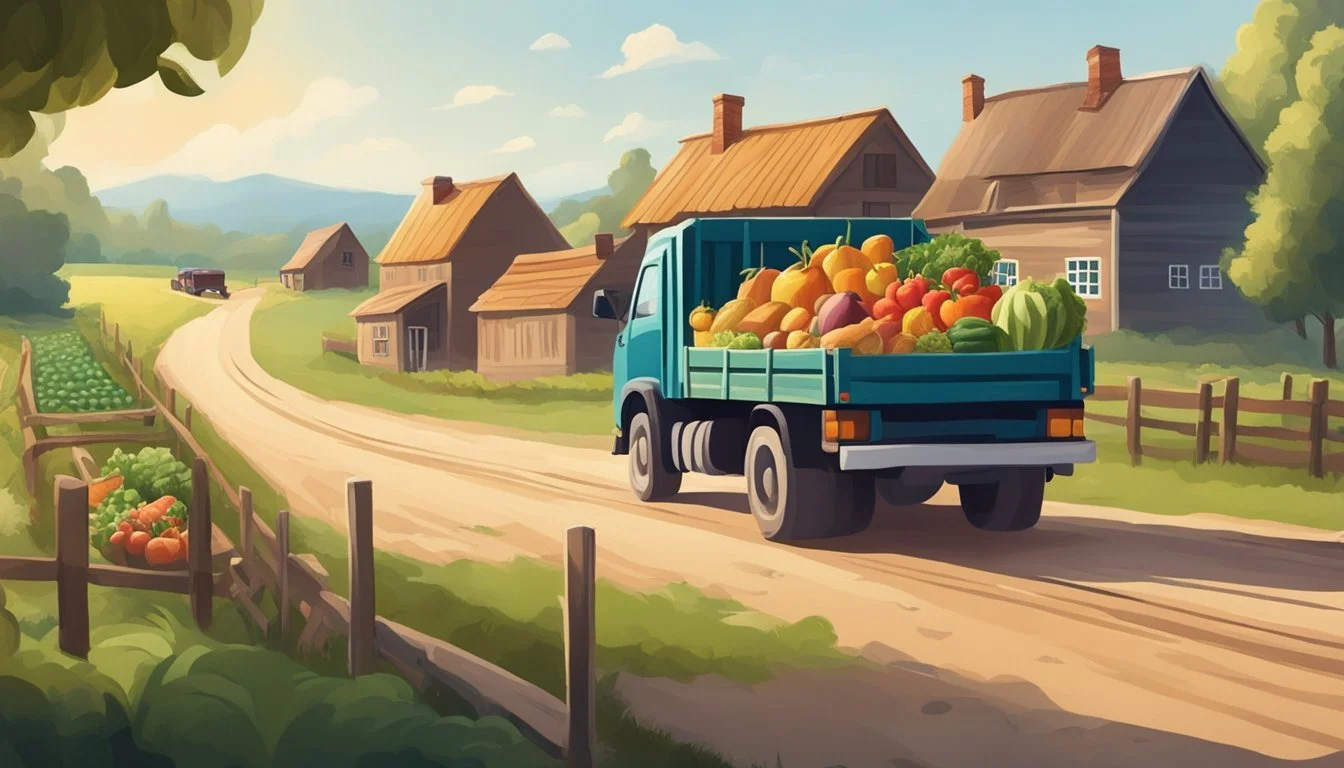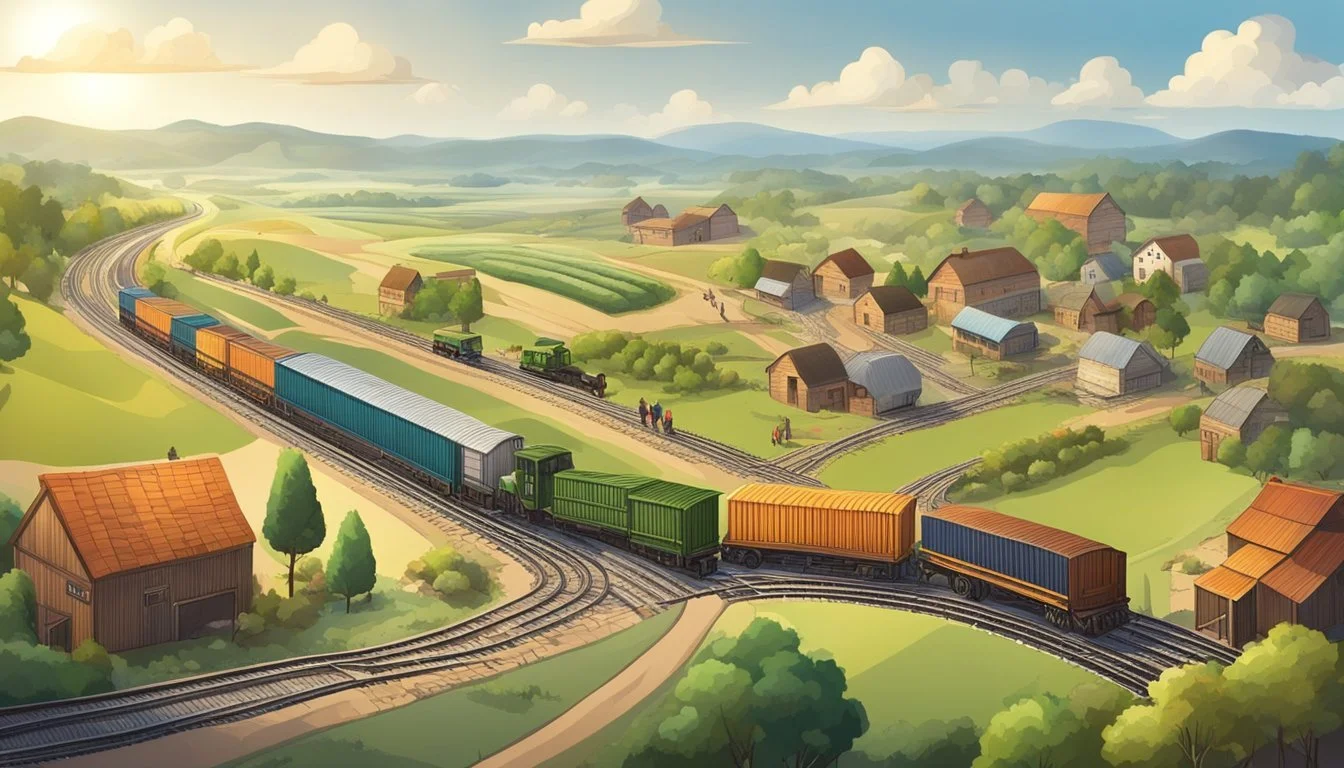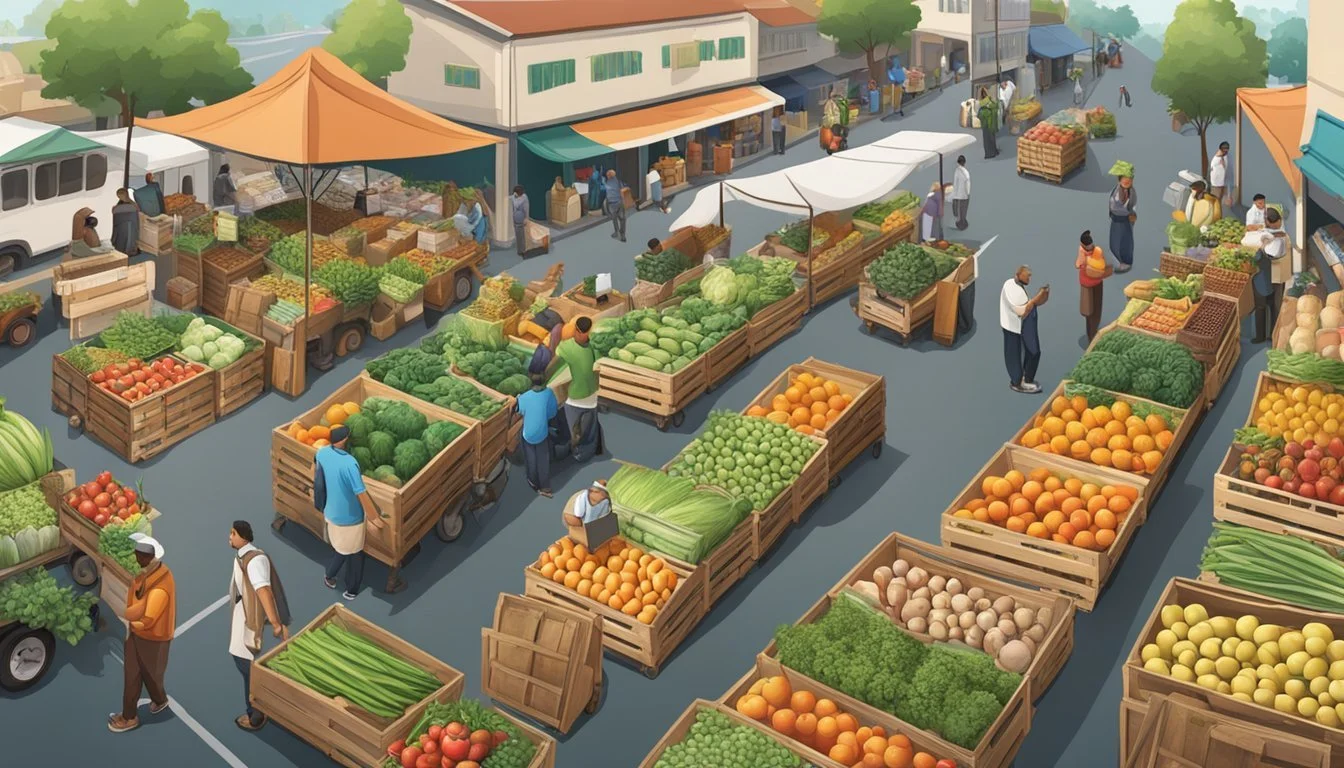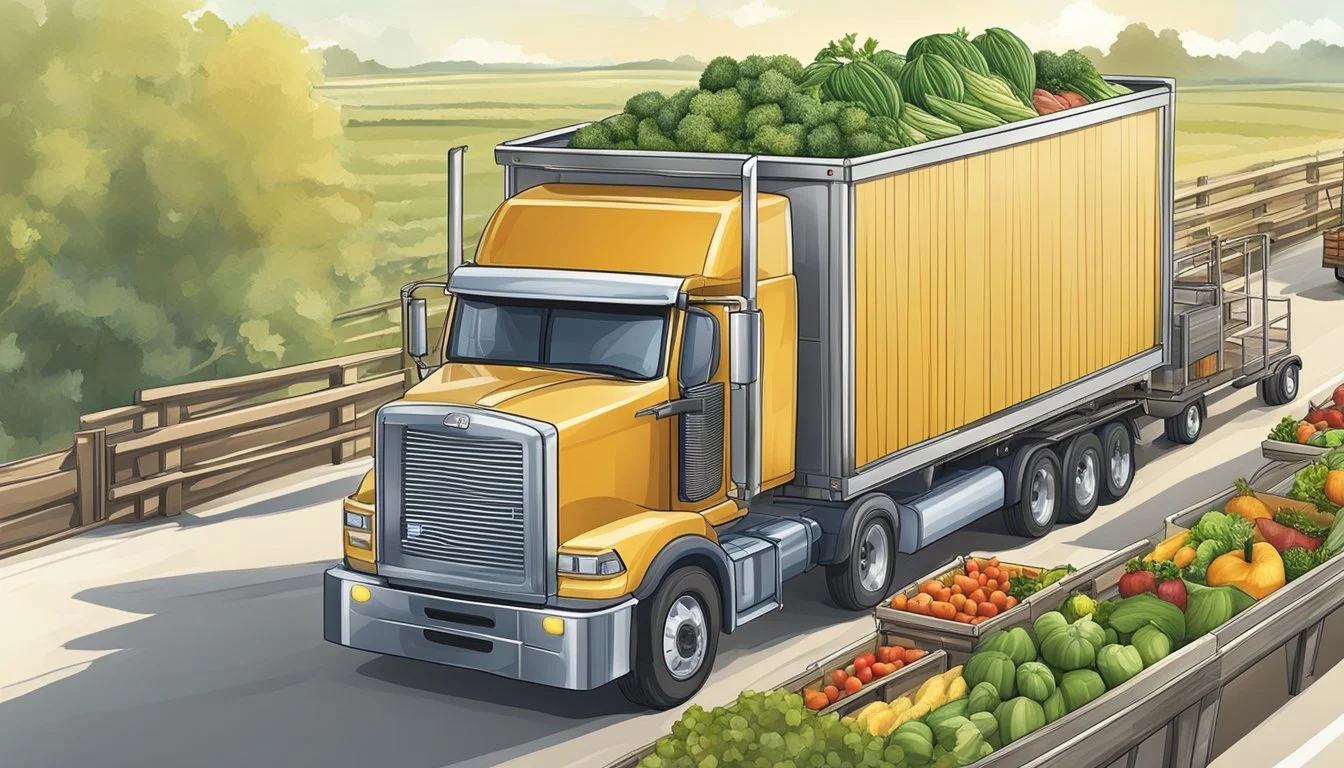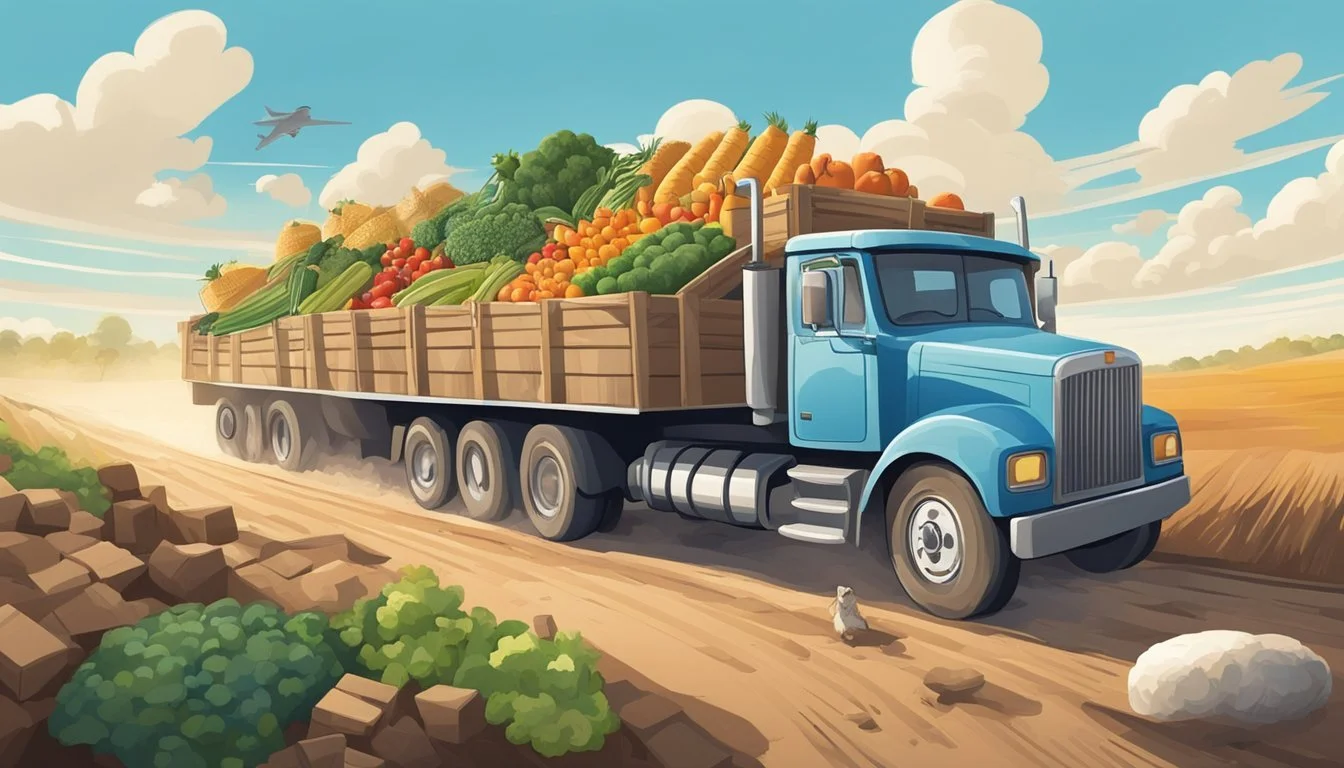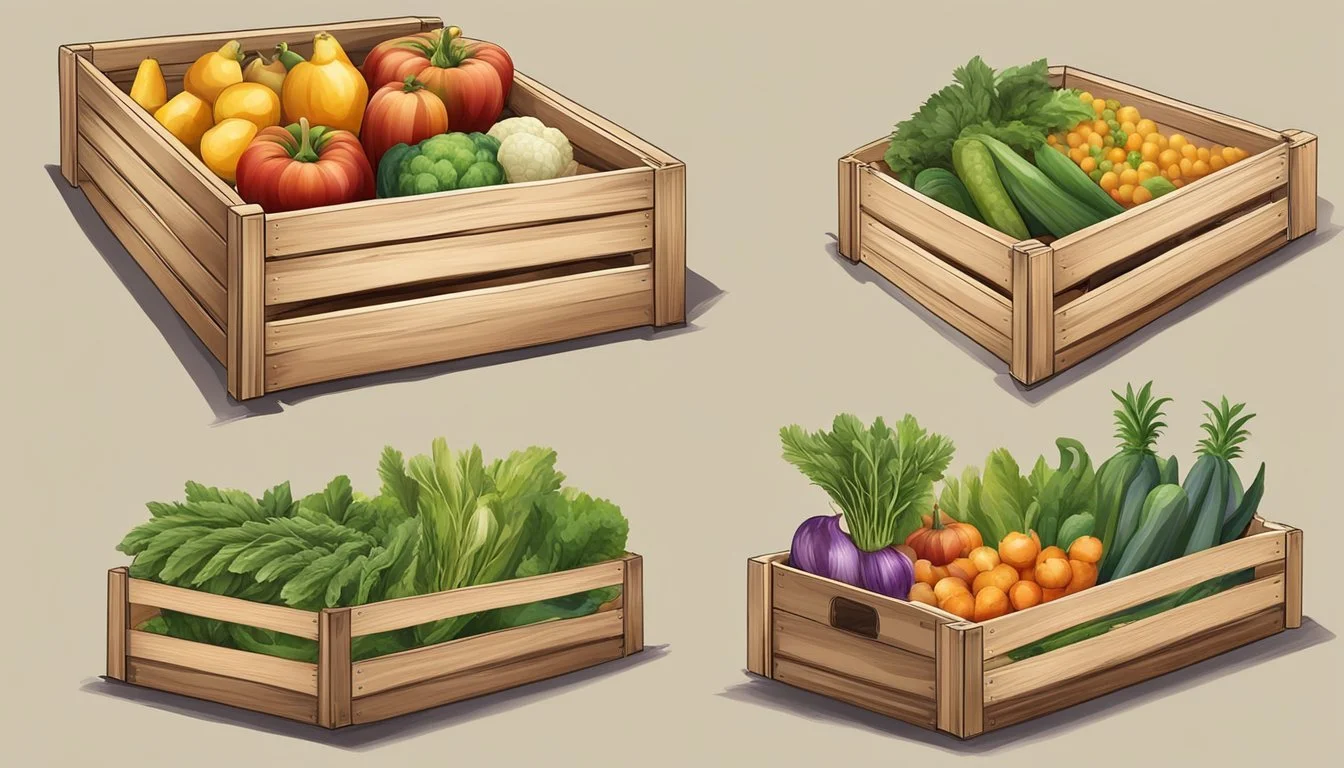The Ultimate Guide to Farm-to-Market Transport Crates
Ensuring Safety for Produce and Animals
Farm-to-market transportation plays a crucial role in the agricultural supply chain, ensuring that fresh produce and live animals reach their destinations in optimal condition. The selection and use of appropriate transport crates are vital to maintain the quality and safety of agricultural commodities during transit. These containers come in various sizes and materials, tailored to accommodate the specific needs of different types of produce and livestock.
Transport crates must provide adequate ventilation, temperature control, and protection from damage during handling and transport. For fresh produce, maintaining the right temperature and humidity levels is essential to prevent spoilage and preserve freshness. Crates designed for livestock transportation must prioritize the animals' welfare, providing sufficient space, solid footing, and ventilation to minimize stress and ensure their well-being upon arrival.
Adopting the right transport crates is not only important for preserving the quality of farm products but also for the efficiency and sustainability of the farm-to-market journey. These crates, often reusable and stackable, play a key role in reducing waste and costs, illustrating the intersection of economic and environmental considerations within the agricultural sector.
Understanding Farm-to-Market Transport
The movement of agricultural products from the point of production to the marketplace is fundamental to the agricultural supply chain. Efficient transport is key as it impacts both the freshness of produce and the welfare of transported animals.
Essential Concepts of Farm-to-Market Logistics
Farm-to-market logistics encapsulate the planning, implementation, and control of the movement and storage of agricultural goods. Detailing everything from packaging requirements to route optimization, attention to logistics ensures products arrive in optimal condition. Supply chain efficiency is central to this process, requiring the integration of information, transportation, inventory, warehousing, material-handling, and packaging.
The Role of Transport in Agriculture
In agriculture, transport is the linchpin that connects farms to markets. It directly influences agricultural marketing by affecting the cost and time it takes to deliver products, as well as the accessibility of markets for farmers. Road transport, specifically, is crucial as it often provides the last mile of delivery, reaching areas that other modes of transportation cannot.
Types of Farm-to-Market Transportation
Different types of transportation methods are used, each with its own set of benefits and constraints:
Road Transportation: Most common and offers last-mile connectivity. Crucial for perishable goods.
Rail Transportation: Cost-effective for bulk and non-perishable items over long distances.
Water Transportation: Ideal for large quantities and heavy goods, both domestically via rivers and canals, and internationally via shipping.
Air Transportation: Fastest mode, suitable for highly perishable produce and essential goods.
Each method plays a vital role in moving the agricultural products effectively, from their origin to the consumer's reach.
Selecting the Right Transport Crates
When choosing the right transport crates for farm-to-market needs, one must prioritize protection, quality, and appropriate packaging materials. Moving produce and animals safely hinges on selecting crates that align with the specific requirements of the items being transported.
Material Choices for Crates
Plastic Crates:
Advantages: They are highly durable, easy to clean, and provide protection from moisture. Plastic crates often come in vented designs for live animals to ensure proper airflow.
Cardboard Crates:
Advantages: Eco-friendly and recyclable; suitable for lighter and less delicate produce.
Limitations: Not as durable as plastic and may absorb moisture, which is unsuitable for certain types of produce or for transporting live animals.
Sizing and Modularity
Sizes should correspond to the type and amount of produce to minimize movement during transit and prevent damage.
Modular designs allow for better stacking and space management within transportation vehicles.
Crates must be sized for the specific type of animal to ensure they have enough space to be comfortable but not too much to allow excessive movement, which can lead to injury.
Designs such as those from Rite Farm or Premier 1 Supplies often include multiple access points to facilitate the handling of poultry.
Durability and Protection
Quality Check:
High-quality materials translate directly into the longevity of the crate and the ultimate protection of the contents during transportation.
Protection:
For live animals, sturdy construction prevents escape or injury, and proper ventilation is essential for their well-being.
Produce crates must guard against environmental factors and physical damage. The durability of containers like heavy-duty polyethylene plastic can withstand multiple trips, reducing the long-term costs.
Ensuring Safe Produce Transportation
Transporting produce safely from farms to markets involves meticulous control over factors such as temperature, contamination risks, and packing strategies to preserve the quality and safety of fruits and vegetables.
Temperature Control and Refrigeration
Transporting fruit and vegetables requires strict temperature management. Refrigeration is essential to slow down the respiration rate of produce and inhibit ethylene production, which could otherwise lead to premature spoilage. For instance, leafy greens often demand temperatures between 0-2°C (32-36°F), while tropical fruits may require slightly higher temperatures.
Fruit & Vegetables: Temperature ranges vary widely; carriers must adjust refrigeration units accordingly.
Monitoring: Continuous temperature tracking ensures the produce remains within safe margins during transit.
Contamination Prevention and Food Safety
To prevent contamination, every entity within the supply chain must adhere to rigorous food safety protocols. This includes limiting exposure to pathogens, pests, and pesticide residues to acceptable levels. Clean transportation modes and proper handling practices are critical.
Packing Materials: Use food-grade and non-toxic materials only.
Hygiene Protocols: Regular sanitization of transport crates and vehicles is mandatory.
Stacking and Ventilation Techniques
Proper stacking and ventilation are necessary to maintain the quality of the produce by preventing bruising and ensuring even air distribution. Ventilation helps control humidity levels and remove the ethylene gas, which can accelerate aging in produce.
Stacking: Do not over-stack; allow space for air to circulate.
Crates Design: Select crates with adequate ventilation slots to promote air flow.
Livestock and Animal Transport Solutions
In the field of livestock and animal transportation, the goal is to ensure safe and stress-free travel. Careful consideration of crate requirements, animal welfare, and adherence to regulations is crucial for successful transport.
Crate Requirements for Different Animals
Size and Space: Different animals require crates of varying sizes. The USDA guidelines stipulate that each animal must have enough room to stand, turn around, and lie down.
Cattle: Crates should be sturdy and spacious to accommodate their size and strength.
Poultry: Smaller, well-ventilated crates are suitable to prevent overheating and allow for easy movement.
Material: Durability and cleanliness are key. Materials should be easy to disinfect and provide protection from the elements.
Accessibility: Crates must have features for easy loading and unloading of animals, reducing stress and potential injury.
Health, Safety, and Welfare Considerations
Ventilation: Adequate air flow is essential to prevent respiratory issues and regulate temperature.
Food and Water: There must be provisions for regular feeding and hydration, especially during long transports.
Stress Reduction: Features like non-slip surfaces and partitions can minimize stress and injury during transit.
Regulations and Standards
USDA Regulations: They set forth comprehensive standards for transport to ensure animal welfare.
Transport Frequency and Distance: Regulations may vary based on how often and how far animals are transported.
Exemptions and Compliance: While some agricultural transport may receive exemptions, knowledge of and compliance with all applicable laws remain a transporter's responsibility.
Each aspect of the crate design and transportation process is carefully considered to optimize the well-being of livestock during transit.
Transportation Networks and Infrastructure
Transportation networks are critical for moving agricultural produce and livestock efficiently and safely from farms to markets. Solid infrastructure underpins the array of transport options available for domestic and international movement, ensuring that products arrive in optimal condition.
Domestic Transport Options
Trucking is the backbone of domestic transportation for farm products. The flexibility and extensive highway systems make trucks ideal for short-haul trips or the initial leg of a longer journey. Meanwhile, rail transportation offers a cost-effective solution for larger shipments over longer distances. It relies on a network of railroads that connect with other modes of transport, such as trucks or barges, at critical interchange points. Key components that affect these modes include:
Highways: Vital for trucking, requiring continuous maintenance and upgrades.
Rail networks: Essential for bulk shipments, necessitating efficient connections to farms and markets.
International Shipping and Exports
Ports play a significant role in international shipping, acting as pivotal points for exports. Agricultural products often travel from farms to these ports by truck or rail before being loaded onto ocean vessels. These ports must be well-designed to handle various types of cargo efficiently, which is critical in a globalized economy where timeliness and food safety are paramount. Essential port infrastructure elements include:
Loading equipment: For swift and safe transfer of crates.
Storage facilities: To maintain the quality of perishable goods before export.
Improving Transportation Efficiency
Investments in transportation infrastructure aim to enhance efficiency and adapt to the demands of globalization. Upgrades to roadways, expansion of rail capacity, and modernization of ports help in handling the growing volume of farm-to-market goods. Efficiency can be increased through:
Technology: Implementation of advanced logistics management systems.
Intermodal Solutions: Use of standardized transportation crates compatible with multiple transport modes.
By addressing these areas, stakeholders can reduce delays, lower transportation costs, and improve the overall quality of farm-to-market transport.
The Economics of Transportation Crates
When considering farm-to-market transport, the economics of transportation crates are central to both operational efficiency and cost-effectiveness. This section breaks down the nuances of cost analysis, the influence of transportation costs on product pricing, and the supply and demand dynamics in the crate market.
Cost Analysis and Budgeting
Budgeting for transportation crates involves upfront capital costs and ongoing expenses. Capital costs include purchasing of crates, which can vary depending on material—plastic or wood—and size. Ongoing expenses cover maintenance and potential replacement. Farmers and distributors must calculate these expenses against the lifespan of the crates to determine overall cost-effectiveness.
Impact of Transportation Costs on Pricing
Transportation costs directly affect the final pricing of produce and livestock for the consumer and margins for retailers. Key factors affecting these costs include the availability and price of transportation modes used—trucking, rail, barge, or ocean vessels. Seasonal availability of equipment and the state of transportation logistics contribute to variable costs that can impact profit margins and consumer prices.
Supply and Demand Considerations
The supply chain for transportation crates is influenced by the supply of raw materials and manufacturing capacity. During peak demand, such as harvest seasons, shortages in supply can lead to inflated prices for crates. Conversely, overproduction can lead to a surplus, potentially decreasing costs. Both scenarios affect the retailers' inventory strategies and the pricing offered to consumers.
Market Dynamics and Consumer Preferences
In analyzing the supply chain from farms to markets, the intersection of market dynamics and consumer preferences is pivotal to the transportation of produce and animals. These factors drive decision-making for both producers and transporters.
Trends in Produce and Animal Transport
The transport of produce and animals to market has seen a shift toward eco-friendly and sustainable practices. Sustainable transport crates are increasingly adopted due to consumer demand for environmentally friendly options.
Produce: Preferences for less packaging and biodegradable materials have increased.
Animals: There is a higher standard for humane transport conditions, which include adequate space and ventilation.
This trend is influenced by consumer awareness and the ethical standpoints of the market.
Local Markets versus Global Trade
The preference for locally sourced foods has strengthened local markets but global trade remains an essential component of the market dynamics.
Local Markets: These focus on reducing transport mileage, which can enhance shelf life and freshness.
Global Trade: Demands coordination for long-haul transport, where packaging must ensure the preservation of quality and shelf life during extended journeys.
The balance between these two markets is crucial as consumers weigh the benefits of local freshness against the variety offered by global trade.
Consumer Demand and Quality Expectations
Consumer demand has increasingly tilted towards high-quality, safe, and organic produce.
Supermarkets have implemented stringent quality checks to assure consumers of the safety and quality of their offerings.
Expectations: Consumers now expect higher shelf life and nutrient retention, which directly affect transport methods and materials.
To meet these expectations, the market for transport crates has evolved to incorporate innovative materials that can preserve quality while adhering to safety standards.
The Cold Chain and Perishable Foods
The cold chain is crucial for ensuring the safe transport of perishable foods, using refrigerated transport systems, maintaining the integrity of the cold chain, and employing advanced technologies to sustain product quality from farm to market.
Refrigerated Transport Systems
Refrigerated transport systems are the backbone of the cold chain, providing a controlled environment critical for perishable foods during transit. Refrigerated containers, also known as reefers, are designed to maintain specific temperatures and are an essential component for the transport of temperature-sensitive products. They come in various sizes and are equipped with cooling systems to handle different types of perishable goods.
Maintaining Integrity of the Cold Chain
Maintaining the cold chain's integrity involves constant monitoring and control to prevent temperature excursions that could compromise the quality and safety of perishable foods. It starts with pre-cooling at the production site and extends through storage, handling, and transport. Effective management includes:
Temperature Tracking: Continuous monitoring using digital data loggers or IoT sensors.
Proper Handling Procedures: Ensuring that perishable goods are swiftly moved between refrigerated spaces and transport units.
Cold Chain Technologies
Cold chain technologies play a pivotal role in the transportation of perishable foods. Innovations include:
Advanced Refrigeration Systems: Utilize modern compressors and eco-friendly refrigerants to maintain optimal conditions.
Real-Time Monitoring Solutions: Allow for GPS tracking and temperature monitoring to ensure products remain within safe parameters.
These systems and practices work in unison to protect perishable foods, reduce spoilage, and deliver safe, high-quality products to the market.
Packaging Materials and Technologies
In the realm of farm-to-market transport, selecting the right packaging materials and technologies is crucial for safeguarding produce and ensuring the safe transportation of animals. From advancements in design to sustainable choices, each innovation plays a pivotal role in extending shelf life and maintaining the integrity of the goods in transit.
Innovations in Packaging Design
Modern packaging designs have evolved to address specific needs during transportation. They include features such as improved ventilation, reinforced corners for added durability, and ergonomic shapes for easier handling and stacking. For instance, modified atmosphere packaging (MAP) introduces a calculated mix of gases in a sealed container, utilizing materials that prevent the escape of these gases while not actively regulating the mixture. This technology is tailored to maintain the optimal environment for extending the produce’s freshness.
Biodegradable and Sustainable Options
The shift toward sustainable packaging solutions has introduced a variety of biodegradable materials that reduce environmental impact without compromising the protection of the contents. Materials like plant-based plastics, molded fiber, and starch-based packing peanuts are not only derived from renewable resources but are also compostable. The incorporation of these materials into transport crates aligns with ecological values and supports a circular economy, all while maintaining the necessary structural integrity to protect the produce and animals during transit.
Barrier Technologies to Enhance Shelf Life
Barrier technologies are essential to extend shelf life and ensure the safety of produce from farm to market. These technologies involve the use of materials that provide resistance to moisture, gases, and light. For example, multilayer films can be engineered to offer selective permeability, controlling the oxygen and carbon dioxide levels to slow down respiration rates in fruits and vegetables. Protective barriers combined with temperature and humidity controls reduce spoilage and preserve the quality of farm products during transportation.
Best Practices for Handling and Storage
Transport crates play a vital role in preserving the quality and safety of produce and animals during transportation. This guide lays out specific procedures and strategies to ensure optimal handling and storage, from loading to long-term warehousing.
Loading and Unloading Procedures
Loading and unloading of transport crates must be systematic to minimize damage and stress to the contents. Produce should be loaded with care to prevent bruising, and animals need to be handled calmly and securely. Use equipment that's compatible with the crate design, and adhere to weight limits to avoid overloading. For example:
Loading:
Check crate stability before loading.
Use forklifts gently to prevent jostling.
Unloading:
Verify the destination has appropriate unloading equipment.
Inspect crates upon unloading for any signs of damage or stress.
Warehouse Management
Effective warehouse management ensures that the integrity of the product is maintained before and after transportation. It includes monitoring environmental conditions such as temperature and humidity, which are critical for produce. Warehouses should be clean and free from contaminants, with a designated area for inspecting and sorting crates. Proper signs should be in place to facilitate a logical flow of goods, reducing the chance of mishandling. Key points include:
Temperature: Maintain ideal temperature ranges for specific produce or animal needs.
Accessibility: Keep frequently accessed items near the front to reduce crate movement.
Long-Term Storage Strategies
For long-term storage, both the physical structure and the internal environment of the storage facility are crucial. Transport crates should be designed to be stackable to maximize space efficiency, but with sufficient airflow to prevent spoilage. Cataloging systems are vital for efficient inventory management. Produce and animals require different storage strategies, where:
Produce should be stored in a cool, ventilated area and monitored regularly for spoilage or dehydration.
Animals should have adequate space, ventilation, and access to food and water, with their conditions closely monitored for any signs of distress.
Challenges and Solutions in Farm-to-Market Transport
Transporting produce and animals from farms to markets entails various hurdles that require robust solutions. This section addresses these hurdles categorically, outlining pragmatic strategies to ensure safe and efficient transport.
Dealing with Environmental Challenges
Environmental conditions such as extreme weather can severely hamper farm-to-market transport. Solutions include:
Climate-Adaptive Packaging: Utilizing weather-resistant crates and packaging materials mitigate damages from conditions like moisture and heat.
Timely Dispatch: Planning transport during favorable weather windows reduces the risk of climatic disruptions.
Mitigating Transportation Risks
Risks in transportation can range from vehicular breakdowns to delays caused by traffic or regulatory issues. Solutions involve:
Regular Maintenance: Ensuring vehicles are well-maintained decreases the likelihood of mechanical failures.
Compliance with Regulations: Acquiring appropriate permits and understanding state-specific regulations prevent legal obstacles.
Strategies for Efficient Transport
Efficiency in transport is critical for freshness and viability. Strategic measures include:
Optimized Routing: Utilizing GPS technology for real-time traffic updates ensures the most direct and least congested routes.
Load Consolidation: Maximizing space by consolidating loads reduces the number of trips and associated costs.
Conclusion
In the dynamic landscape of agricultural transport, evolving trends indicate a clear trajectory towards increased sustainability. The development and utilization of farm-to-market transport crates are pivotal in securing the integrity of produce and livestock. These containers not only cushion the supply chain from the farm to the consumer, but also play a crucial role in maintaining the quality of the commodities transported.
Sustainability has emerged as a paramount consideration, with the industry leaning towards recyclable and biodegradable materials for transport crates. These materials reduce environmental impact and support a circular economy, aligning with global efforts toward conservation. Future trends will likely see heightened innovation in crate materials, aiming to further reduce carbon footprints without compromising on durability and produce safety.
Furthermore, agricultural exports are an economic cornerstone for many regions. Efficient and safe transport crates are instrumental for accessing international markets and ensuring that exported goods arrive in peak condition. This heightens competitiveness and enables producers to meet and exceed international standards.
Looking ahead, future trends suggest smart crates equipped with sensors could become the norm, providing real-time data on produce conditions, thereby increasing transparency and accountability in the supply chain. Innovation in design and technology will continue to be driven by the need to optimize logistics, minimize waste, and cater to growing market demands for quality assurance.
In sum, the industry is poised at the cusp of transformative advancements that promise enhanced sustainability, market expansion, and consistency in delivering quality produce and livestock. It is essential for stakeholders to remain agile and responsive to these shifts, continually adapting to meet the high standards of a globalized market while keeping sustainability at the forefront.

